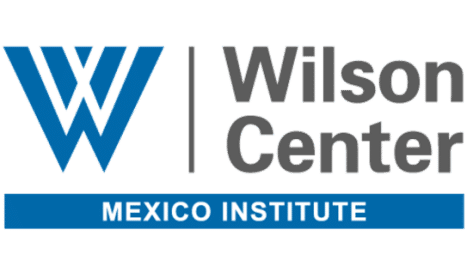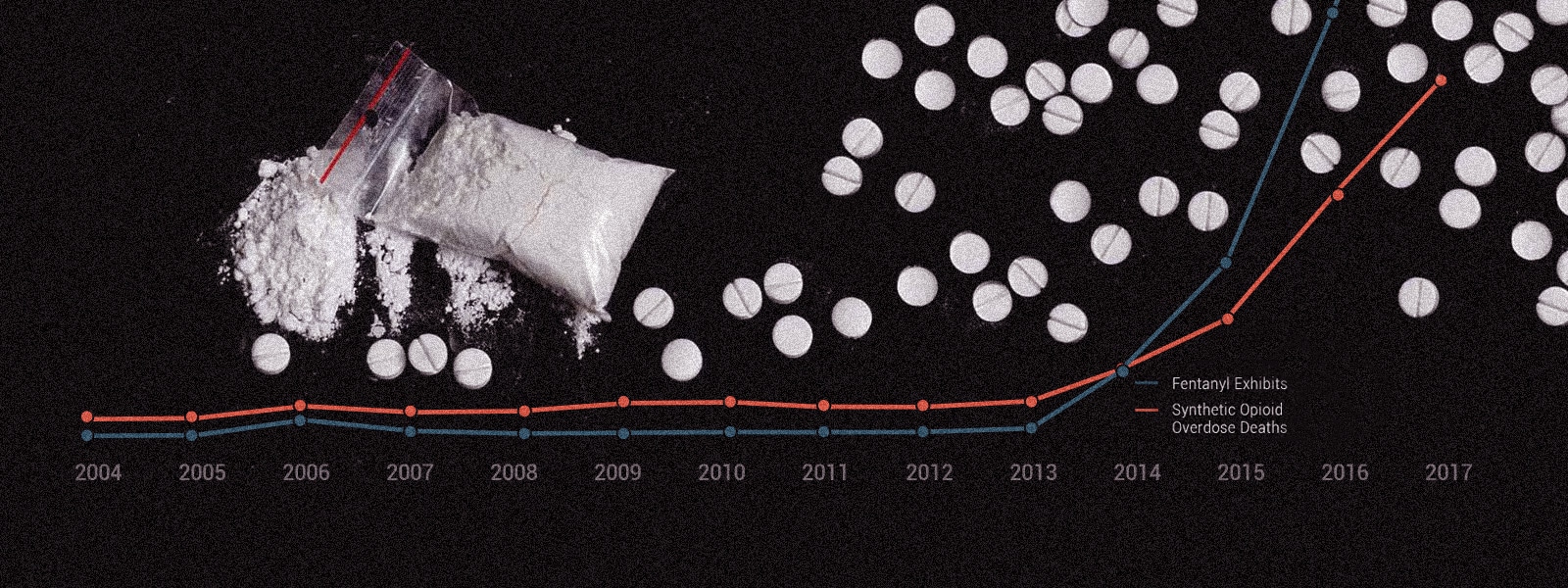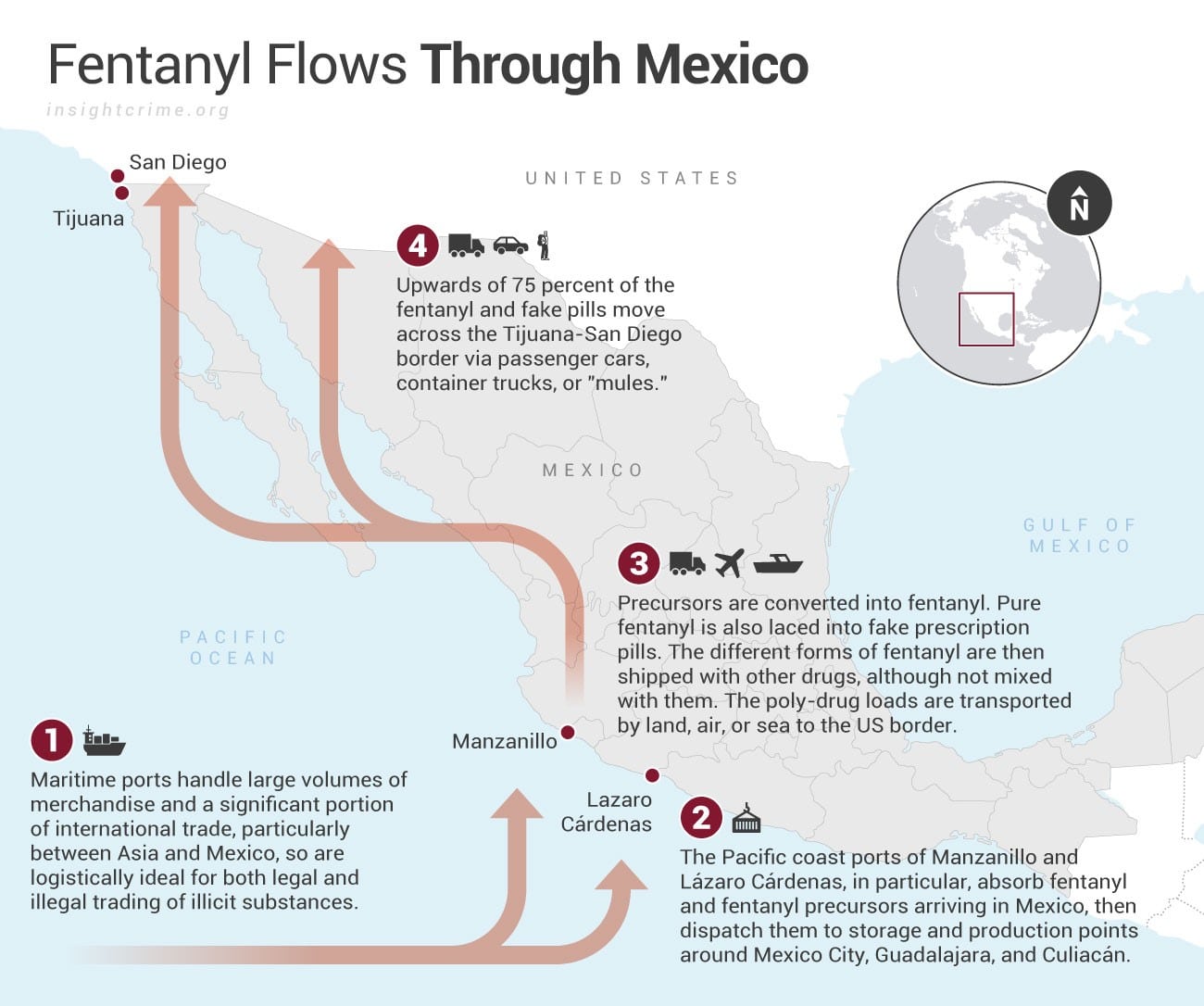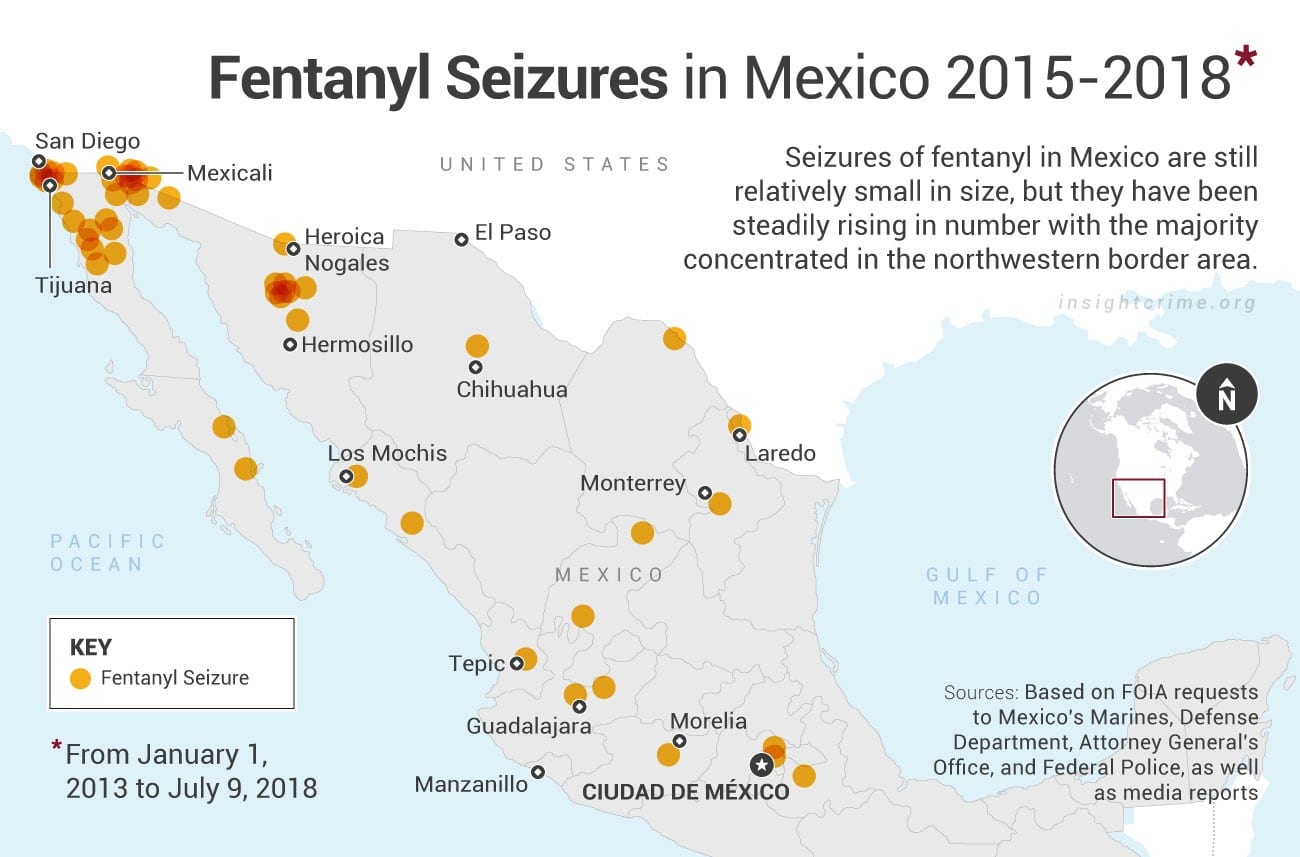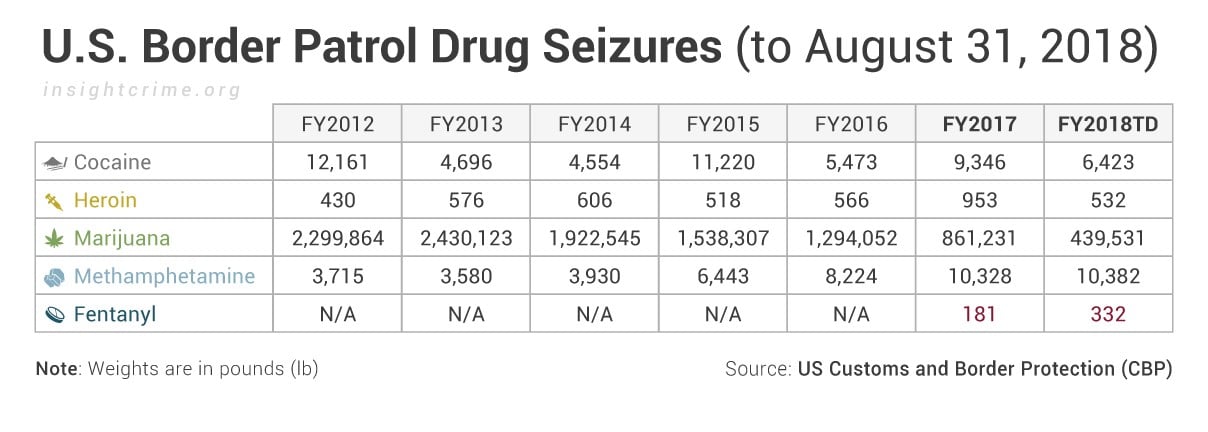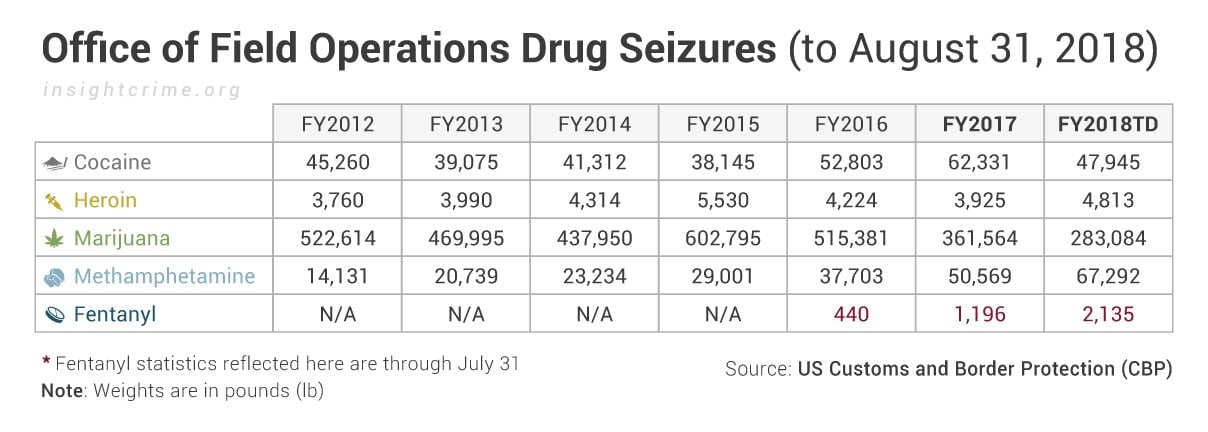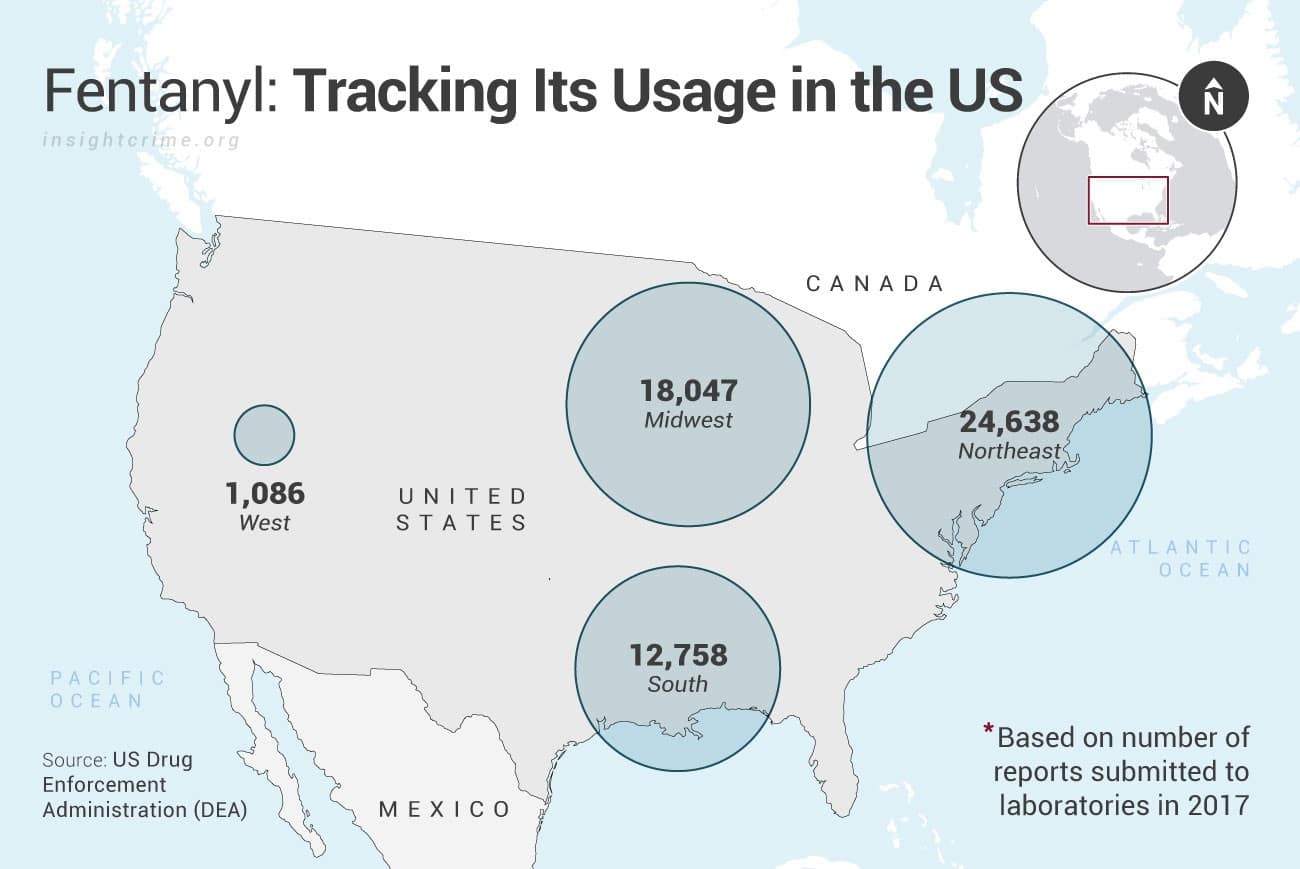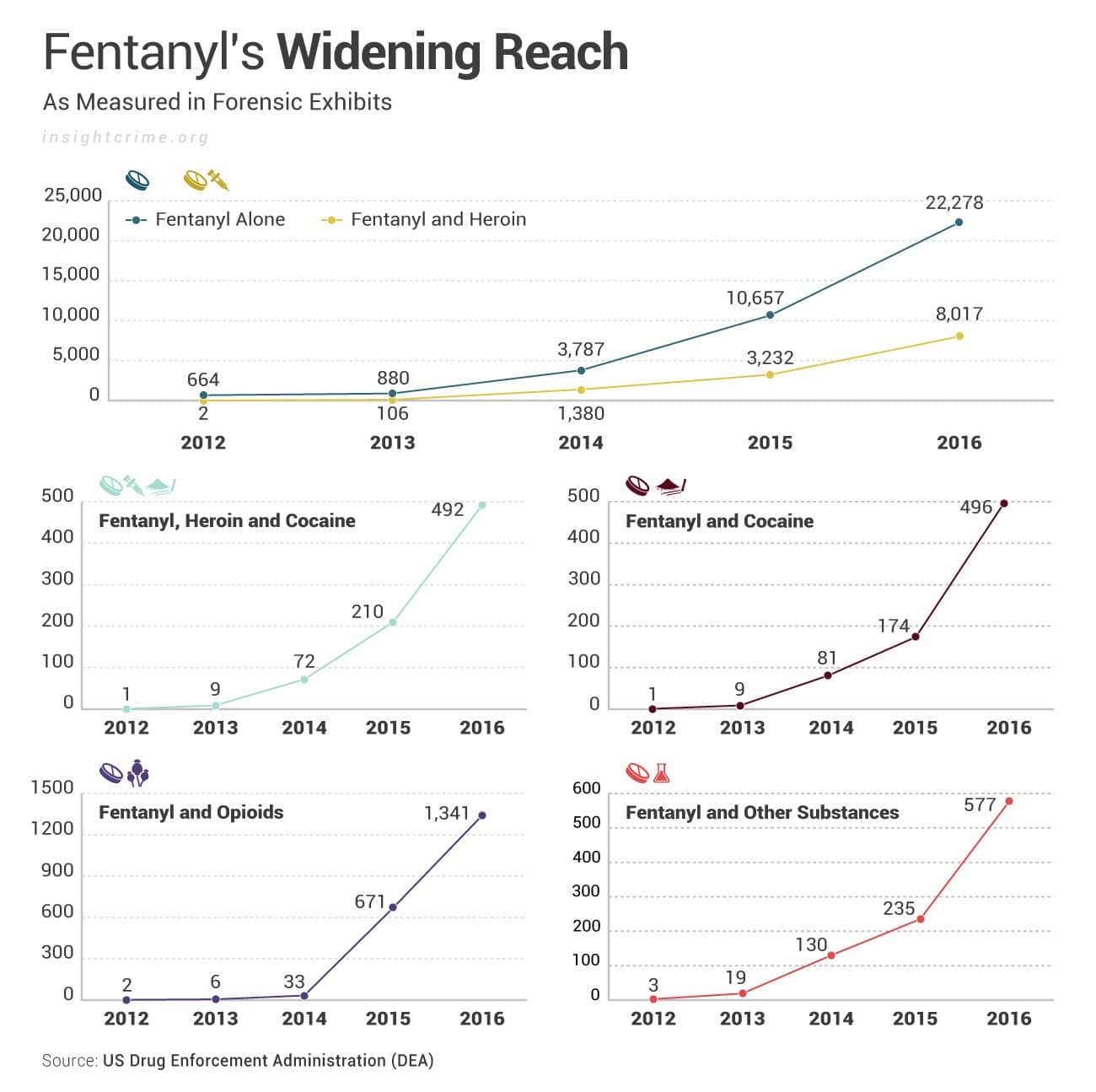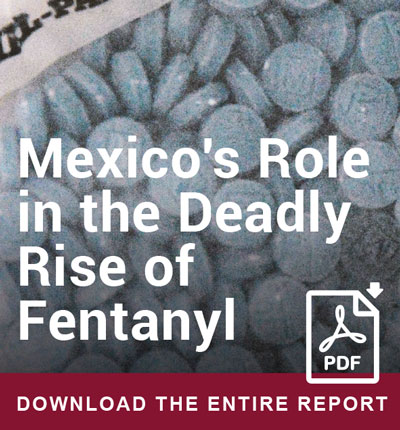
*Fentanyl use is booming in the United States. With support from the Mexico Institute at the Woodrow Wilson International Center for Scholars, InSight Crime mapped the distribution chain, and the role of Mexico’s criminal organizations in the trade in our series about fentanyl. Below are our graphic illustrations of the trade.
The alarming spike in synthetic opioid overdose deaths and the accompanying rise in the presence of fentanyl shows just how quickly long-established supply and demand for drugs can be overthrown. In a grim application of free market theory, fentanyl is the newest, cheapest, most easily-manufactured product. Demand has soared, and users are paying the price by the thousands.
Fentanyl and its precursors are produced at numerous chemical factories in China, trafficked through Mexican ports, and transported to the border and into the US by established Mexican groups by land, air, and sea. However, it also goes straight from China to the US in the mail, threatening to cut Mexican criminal groups out of the trade altogether.
Most seizures of fentanyl in Mexico from 2013-2018 took place in around the border crossings of Tijuana and Nogales or in their states of Baja California and Sonora. That same corridor is traditionally controlled by some of Mexico’s largest criminal organizations.
Although they appear to play a major role in the trade, large criminal groups, such as the Sinaloa Cartel and the Jalisco Cartel New Generation (Cartel Jalisco Nueva Generación – CJNG), are not monolithic operators. Instead, they rely on specialized subcontractors throughout the distribution chain.
SEE ALSO: Sinaloa State Dominates Fentanyl and Meth Production in Mexico
Publicly available seizure data from Customs and Border Protection (CBP), Homeland Security Investigations (HSI), and local level law enforcement show significant increases in fentanyl seizures in the US and along the border with Mexico, suggesting an increase in the role Mexican criminal groups are playing in the trade.
Consumption of fentanyl is strongest in the Northeast United States, where Dominican gangs have traditionally controlled the white powder heroin trade that mixes well with fentanyl. These criminal groups have moved their operations to smaller towns and are shifting their sales to concentrate on fentanyl-only substances, slowly eliminating the heroin altogether.
SEE ALSO: Sonora: Growing Air Corridor for Synthetic Drugs on US-Mexico Border
The versatility of fentanyl and its addictive nature has contributed to its popularity for drug trafficking groups who increasingly cut fentanyl into a multitude of legacy drugs to increase their sales. The end-users, in many instances, do not know they are consuming fentanyl.
